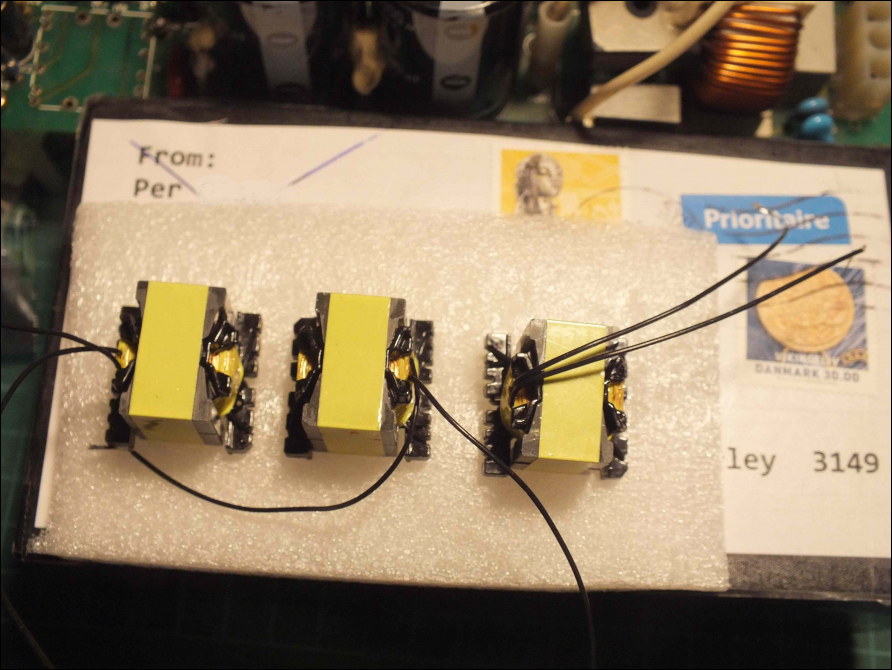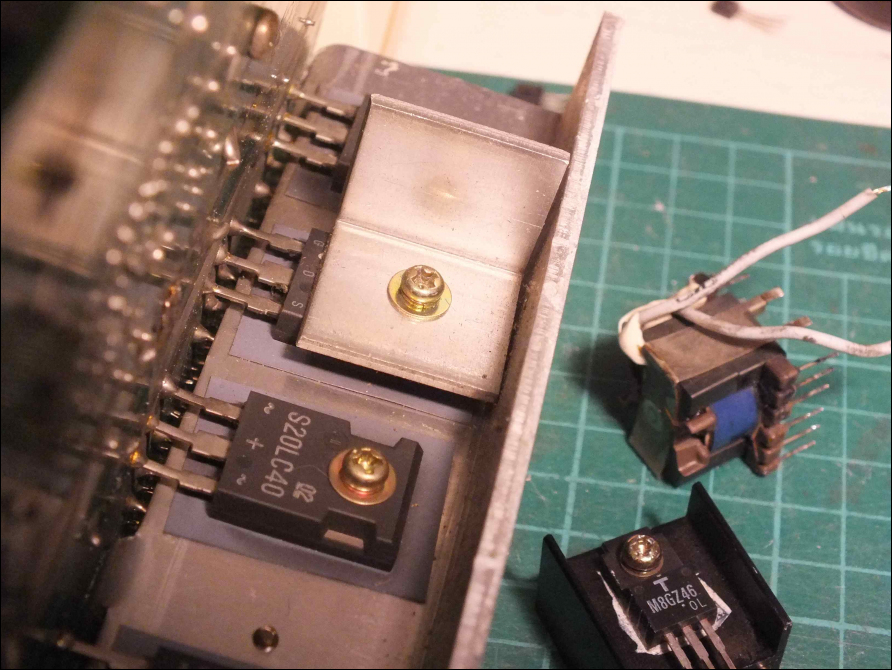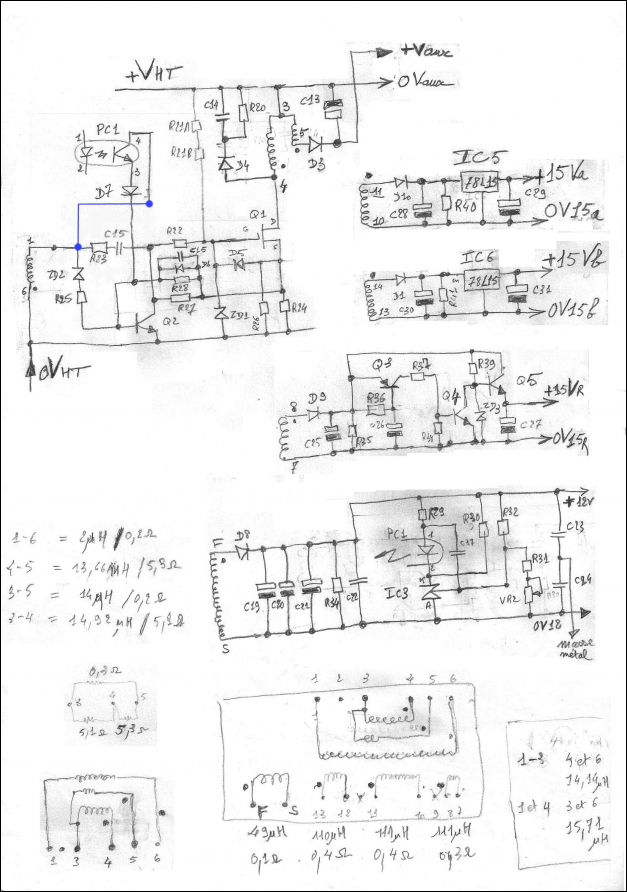Hi All,
Sorry, I forgot to add some useful information regarding the Triac in the motor controller.
Initially I thought the original G-loc Triac was faulty. When testing with my "universal" tester, it showed as a resistor :(
So I bought a replacement Triac which was a little higher rating: BTA10-600C
It has a metal tab, but it's still insulated like the original.
Before installing the new Triac, I tested, and found it to measure the same as the original:

I thought the new Triac was faulty from the shop
But then I thought the tester was faulty.
I found an old Triac which I had from another project, TIC226, and the tester detected a good Triac:

Now I begin to think the original Triac and the new BTA10-600C were faulty, but before I complain to the shop, I have to be sure what I'm talking about. Could it be that the tester cannot correctly test sensitive gate Triac's ? The old TIC226 was not a sensitive gate Triac, so that makes me think that there's a design limit with the tester
I need another way of testing a Triac. A Google search shows there are lot's of simple (low voltage) tests, but I wanted something which would test the Triac under a greater load, but still reasonably safe to operate.
I had a GE3020 (same as a MOC3020) opto-coupler which has a Triac output and can trigger a larger Triac, and the input is isolated, so it's reasonably safe.
Here's an extract from the MOC3020 datasheet:

I built the sensitive-gate version, with a jumper to short out the 2.4K resistor to test older Triac's which need greater trigger current. I used a 390ohm resistor for Rin, so I can use 5VDC to trigger the tester. I also connected a 3mm LED to the input as an indicator so I can confirm when 5V is connected to the input. I also have a small socket for the Triac under test. With this circuit I can test almost any Triac with mains voltage and a few amps of current if I like.
Here's what it looks like:

By the way, we have 240VAC mains in Australia, so the 220VAC on the circuit is good. Those in Japan or USA will need to adjust the 180ohm and 2.4K resistors - check the datasheet for the opto-coupler.
With my tester, all Triac's worked, including the original G-loc Triac
Even the old TIC226 tested perfect in the sensitive gate configuration of the circuit.
I put the original G-loc Triac back in the motor controller
In the end it was a very good learning experience. I found that some test equipment cannot test what might be expected, and so have to build my own test gear.
Cheers for now.
Sorry, I forgot to add some useful information regarding the Triac in the motor controller.
Initially I thought the original G-loc Triac was faulty. When testing with my "universal" tester, it showed as a resistor :(
So I bought a replacement Triac which was a little higher rating: BTA10-600C
It has a metal tab, but it's still insulated like the original.

Before installing the new Triac, I tested, and found it to measure the same as the original:

I thought the new Triac was faulty from the shop

But then I thought the tester was faulty.
I found an old Triac which I had from another project, TIC226, and the tester detected a good Triac:

Now I begin to think the original Triac and the new BTA10-600C were faulty, but before I complain to the shop, I have to be sure what I'm talking about. Could it be that the tester cannot correctly test sensitive gate Triac's ? The old TIC226 was not a sensitive gate Triac, so that makes me think that there's a design limit with the tester

I need another way of testing a Triac. A Google search shows there are lot's of simple (low voltage) tests, but I wanted something which would test the Triac under a greater load, but still reasonably safe to operate.
I had a GE3020 (same as a MOC3020) opto-coupler which has a Triac output and can trigger a larger Triac, and the input is isolated, so it's reasonably safe.
Here's an extract from the MOC3020 datasheet:
I built the sensitive-gate version, with a jumper to short out the 2.4K resistor to test older Triac's which need greater trigger current. I used a 390ohm resistor for Rin, so I can use 5VDC to trigger the tester. I also connected a 3mm LED to the input as an indicator so I can confirm when 5V is connected to the input. I also have a small socket for the Triac under test. With this circuit I can test almost any Triac with mains voltage and a few amps of current if I like.
Here's what it looks like:
By the way, we have 240VAC mains in Australia, so the 220VAC on the circuit is good. Those in Japan or USA will need to adjust the 180ohm and 2.4K resistors - check the datasheet for the opto-coupler.
With my tester, all Triac's worked, including the original G-loc Triac

Even the old TIC226 tested perfect in the sensitive gate configuration of the circuit.
I put the original G-loc Triac back in the motor controller

In the end it was a very good learning experience. I found that some test equipment cannot test what might be expected, and so have to build my own test gear.
Cheers for now.

 It works like new.
It works like new.
 This is what I want from the other 15V supply windings after rectification, so the 78L15 regulators (IC5 and IC6) can function correctly.
This is what I want from the other 15V supply windings after rectification, so the 78L15 regulators (IC5 and IC6) can function correctly.













